The real jasmine shrub is an evergreen heat-loving plant. In temperate latitudes, it is used for growing indoors, and is rightfully considered a decoration of the winter garden.
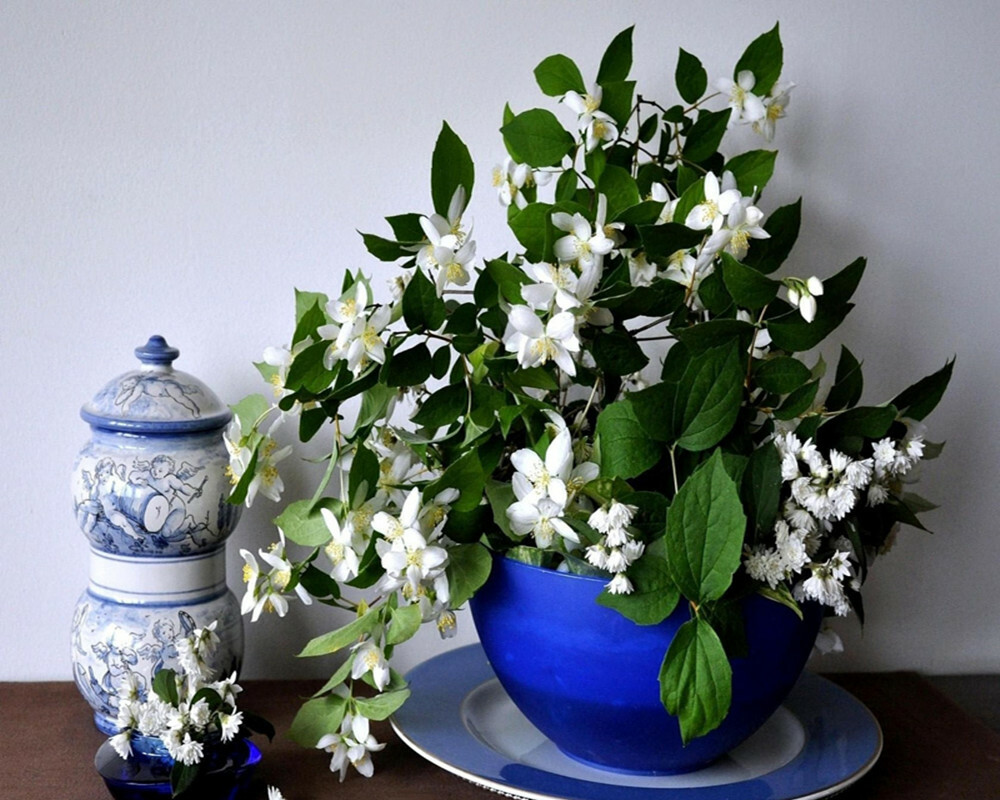
Indoor jasmine - an evergreen flower with an amazing scent
At the dachas of the Moscow region, the Urals, Siberia, a mock-orange is grown, which is also often sold under the name "jasmine". This is the name of a deciduous shrub for the similarity of aroma with a southern flower.
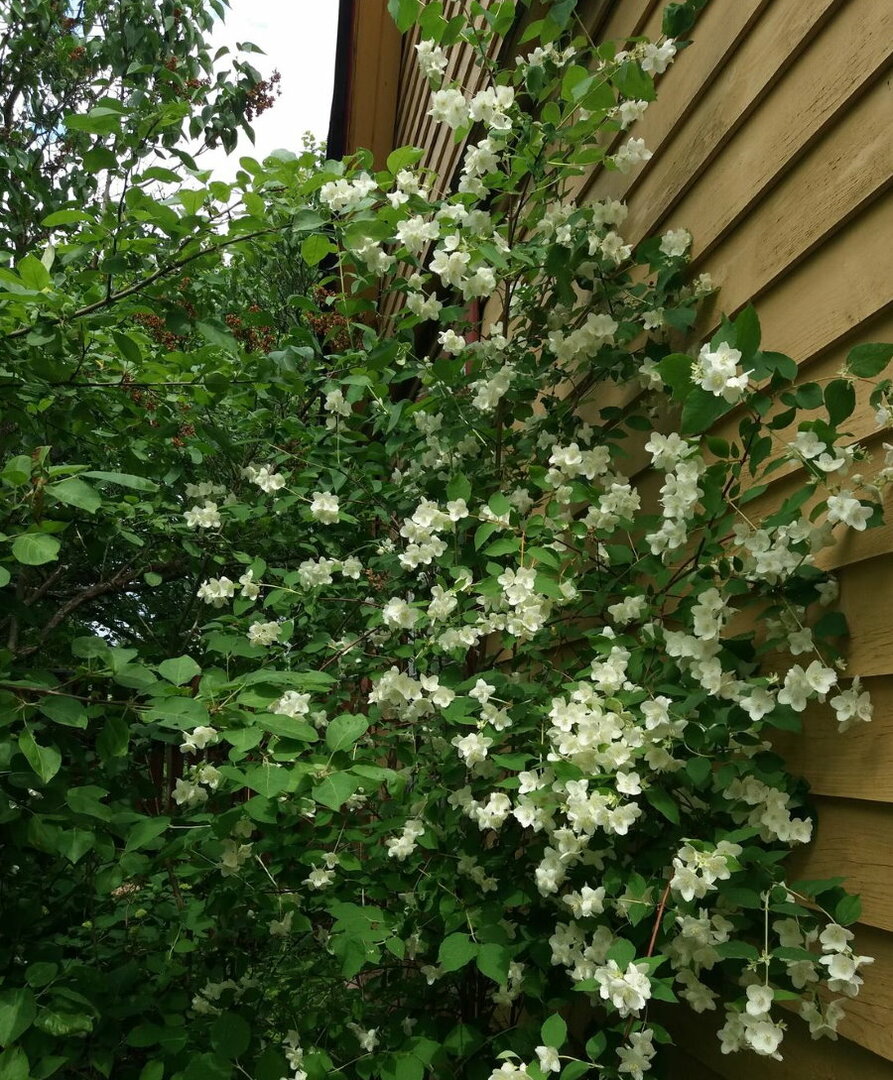
"Garden Jasmine" perfectly tolerates our cold winters and is found in many front gardens of Central Russia
History of the use of jasmine in gardens
Content
- History of the use of jasmine in gardens
- Shrub jasmine
- The reasons for the popularity of this shrub
- Reproduction, planting and care
- Examples of beautiful jasmine garden designs - varieties of culture
- Comparison with chubushnik and combination options
- Photos of beautifully decorated gardens with jasmine
- Video: Shrub jasmine - growing and care
- Photo of jasmine in the garden
Shrub jasmine
There are several versions of the homeland of the garden jasmine plant. The plant is considered the national flower of many countries. Yasmine, which means fragrant flower, is prized in Pakistan as a culinary condiment. In the states of India, in the Philippines, they are used to create flower garlands for newlyweds. According to another version, the flower comes from the Mediterranean, mythical nymphs decorated their wreaths with it.

Shrub jasmine is a fairly tall plant with long shoots.
There are references to the cultivation of crops in the gardens of the Chinese emperors. In the countries of Latin America, jasmine has long become an attribute of religious rituals.
The aroma of jasmine intensifies in the evening, at night. This feature has given rise to many legends and myths.
The reasons for the popularity of this shrub
Garden jasmine is valued in many countries of the world for its high content of essential components; flowers are grown for perfumery and cosmetic industry, they use petal oil for medicinal purposes, as flavoring agents for tea, coffee, confectionery products.
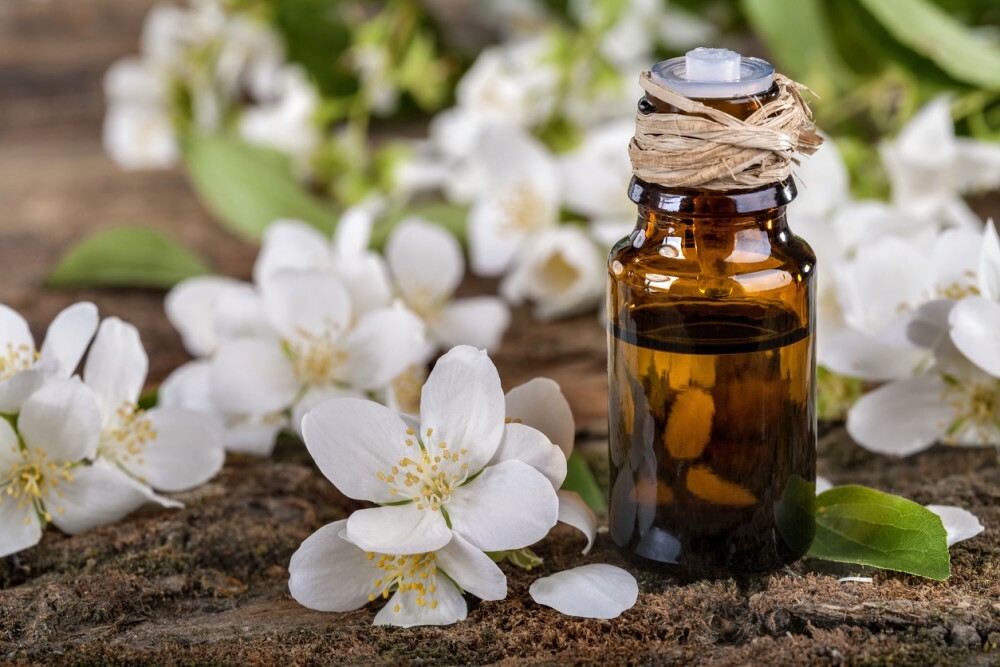
Jasmine oil has an antiseptic, wound healing and soothing effect
The jasmine vine is unusually beautiful, continues to bloom for up to 3 months, exuding a delicate sweetish aroma.
Potted plant forms are used in landscape design. In the summer, the bushes are taken out to the garden, where magnificent plants create an extraordinary atmosphere of comfort and harmony.
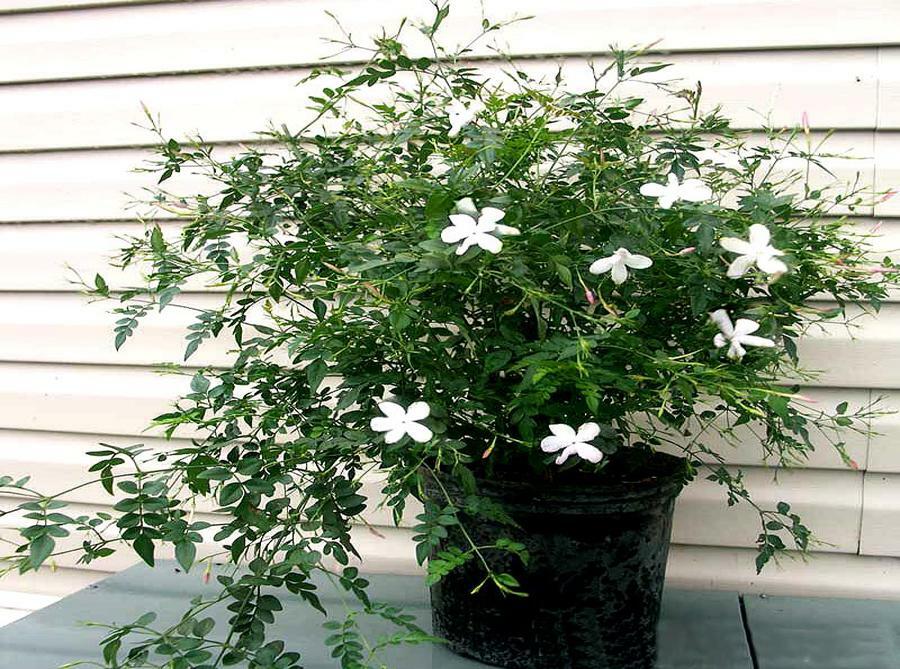
Real jasmine in cold regions is grown exclusively as an indoor or greenhouse plant.
Reproduction, planting and care
Jasmine flower is a type of shrub that is not demanding for maintenance and care. Loves partial shade, buds quickly droop in direct sunlight. The plant develops well at a temperature range of + 18... 26 ° C, high and moderate humidity, painlessly tolerates night drops to + 10 ° C.

You can plant the plant in early autumn or early spring before bud break
For planting, choose a weakly acidic nutrient soil rich in humus. The bush is periodically watered with acidified water. Top dressing is carried out during the period of budding, flowering. They introduce complex fertilizers for indoor flowers "Agricola" or liquid fertilizers with biostimulants.
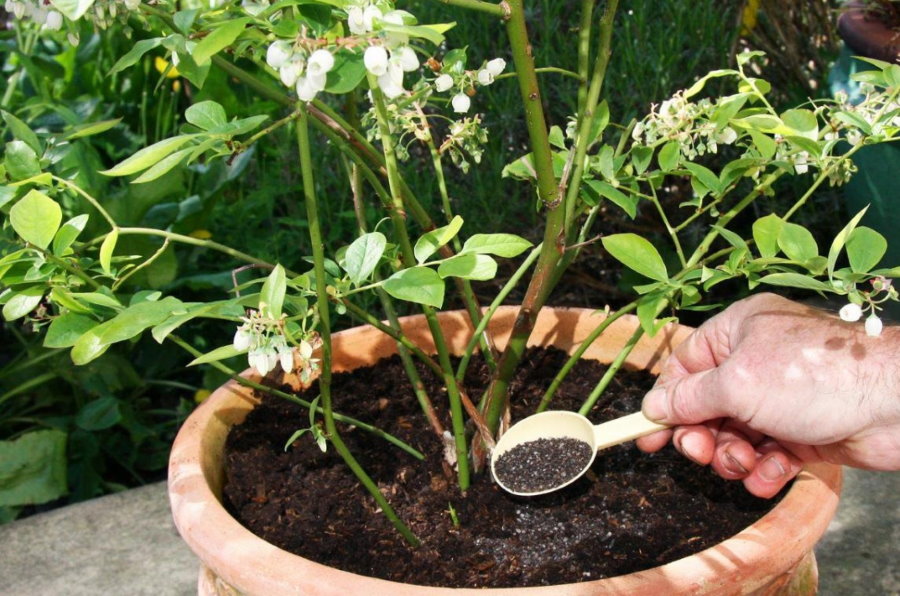
Top dressing has a positive effect on the strength of jasmine flowering
In the spring, the liana is pruned, the shoots are shortened by 1/3 to stimulate branching, the formation of a large number of buds.
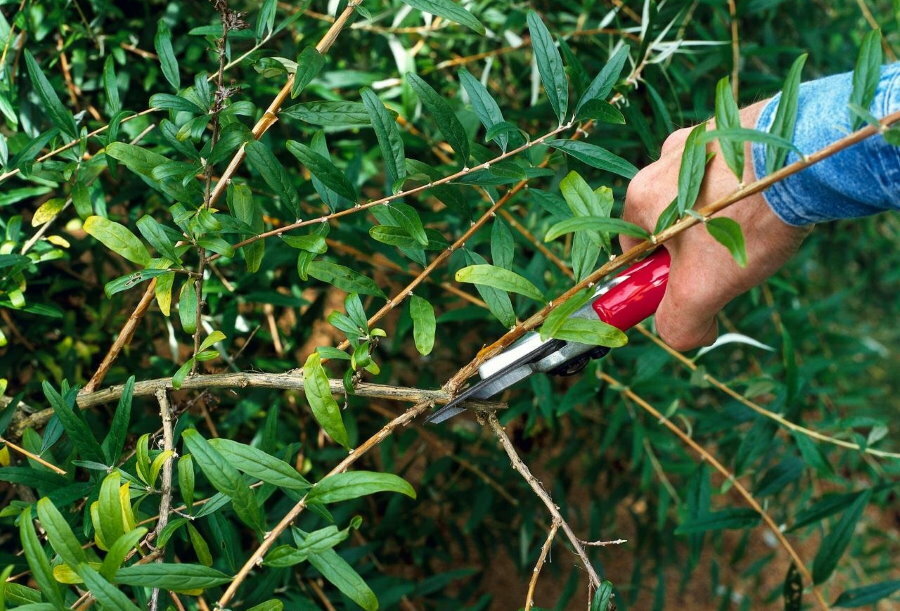
First of all, cut off dried and thickening branches
Varieties of the "Sambac" variety are sheared every three years, the rest of the jasmines - annually.
Reproduction is practiced by air layers or cuttings. To breed jasmine seeds for a long time. For grafting, choose 4-year-old shoots, cut the branches into 15 cm fragments so that each has 3-4 leaves. To form the roots, they are kept in a growth stimulant solution or embedded in a moistened nutrient substrate with moisture-reducing components, periodically moistened. After the appearance of a bunch of roots, the seedling is ready for planting.
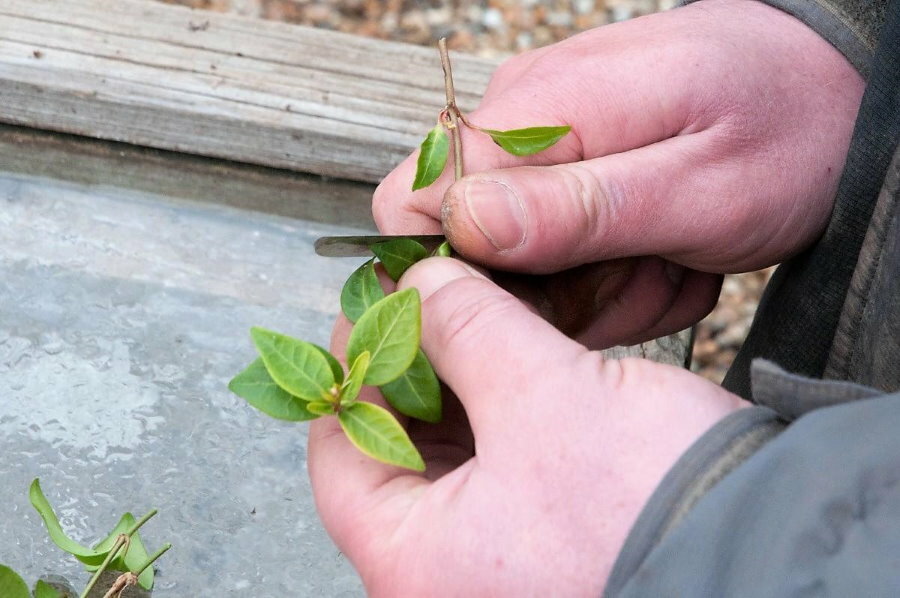
When propagated by cuttings, jasmine retains its varietal characteristics.
The air layers are separated by dropping. For rapid growth, cuts or scratches are made on the bark.
When planting purchased seedlings, the roots are carefully examined, damaged and dried fragments of the roots are removed. Before planting, the root part of the plant is dipped into a chatterbox. A mixture of slurry, fluff and clay is made in equal parts, diluted to the consistency of sour cream. Shoots are shortened by 2/3 for better survival.
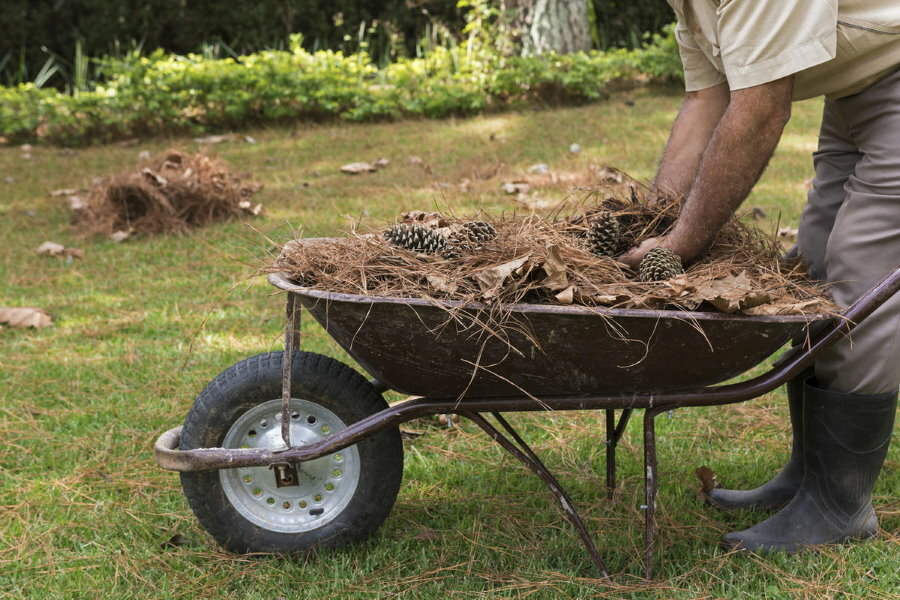
The trunk circle must be mulched to protect the roots from freezing
Examples of beautiful jasmine garden designs - varieties of culture
The flowering jasmine shrub is unusually beautiful, it's a pity the photo does not convey the aroma of the plant. For the decoration of flower beds and single planting, several varieties are used with yellow, cream, red and white buds.
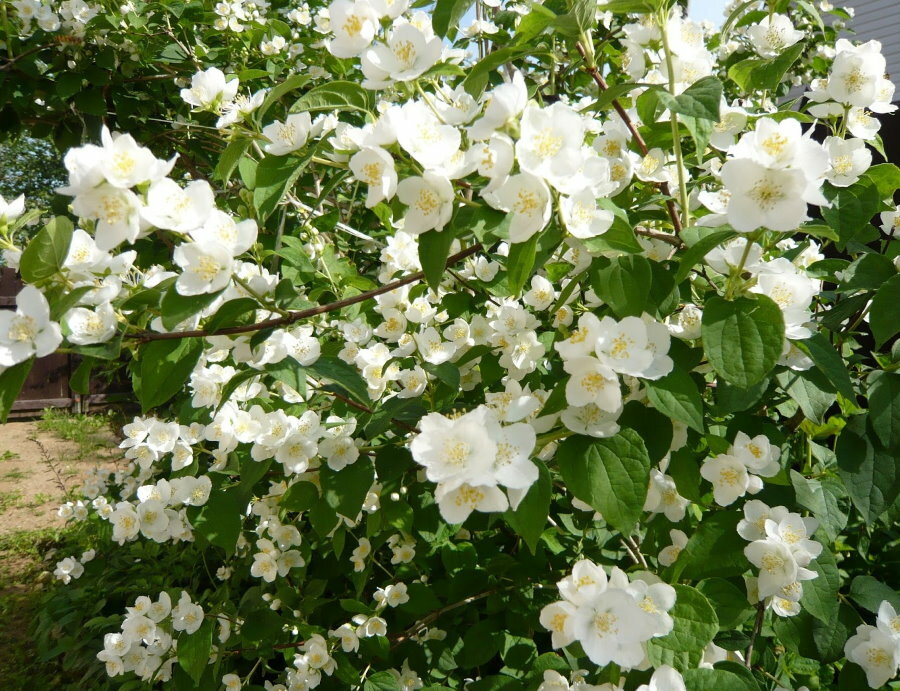
Most jasmine varieties have fragrant buds. The aroma of some flowers is felt even at a great distance, there are also varieties with the thinnest, barely perceptible smell
A brief description of the main types of jasmine:
- Multi-flowered - climbing shrub with shoots up to 2 meters. The leaves are dark green, with a wavy edge, the buds are pink, the petals turn white when blooming. Early flowering, flowers delight within six months.
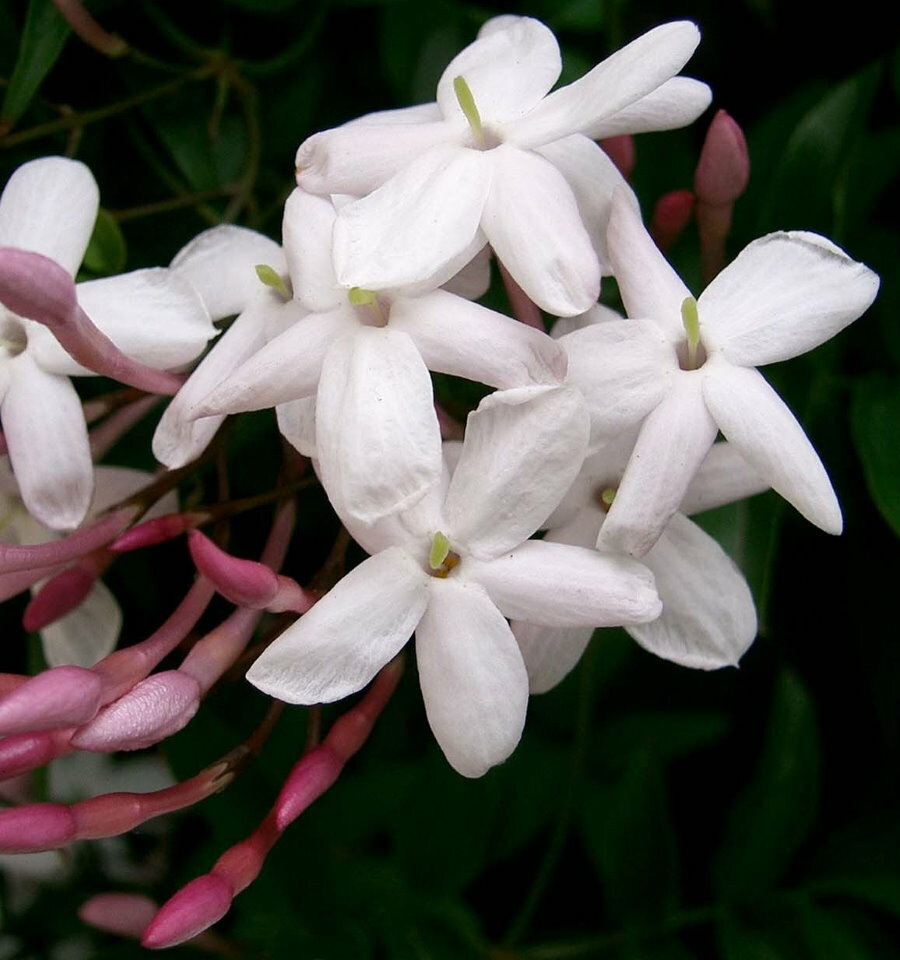
Multiflorous jasmine is a native of tropical forests, therefore, the plant needs humid air for normal development and flowering.
- The thinnest is a long-growing variety of liana, grows on a support up to 3 m. Flowers with pointed petals are collected in umbellate inflorescences. Duration of flowering is 2 months.
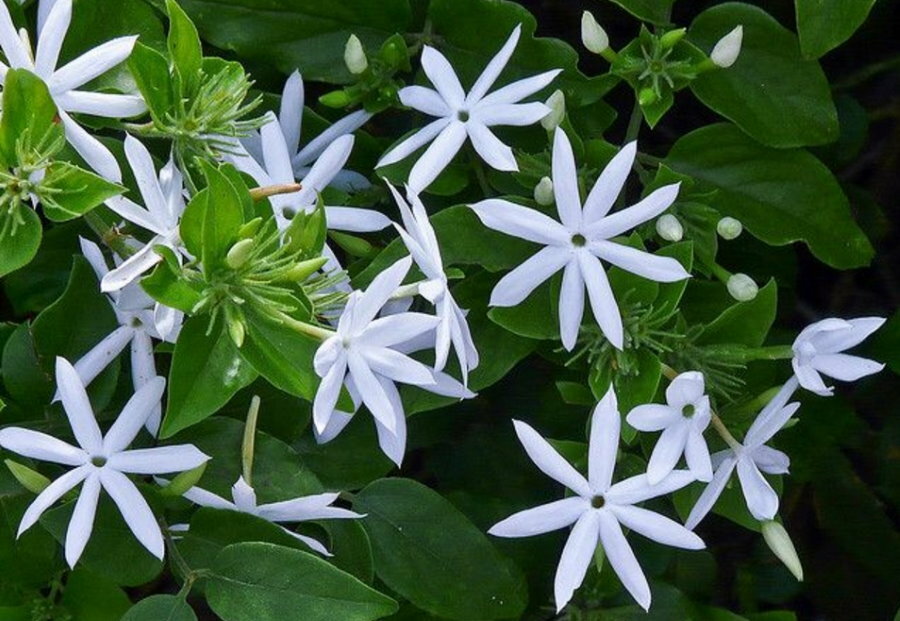
The thinnest jasmine is characterized by large white inflorescences
- Large-flowered forms tent-like thickets, the length of shoots reaches 10 m. The flowers are snow-white, 5-petaled, form inflorescences in the form of caps, consisting of 10-12 flowers. They have the longest flowering, up to 5 months. The first buds appear at the end of May.
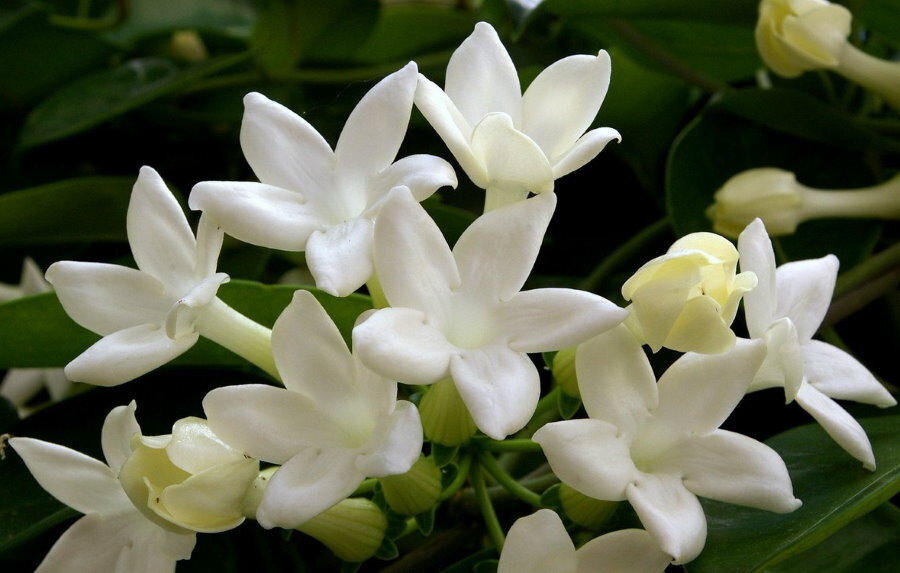
Large-flowered jasmine - vine-shaped variety
- Bissa is a pinkish-red variety of medium-sized jasmine. The leaves are lanceolate, dark, shiny. Flowering begins in June. The flowers are small, collected in loose inflorescence caps, retain their decorative effect for up to 3 months.
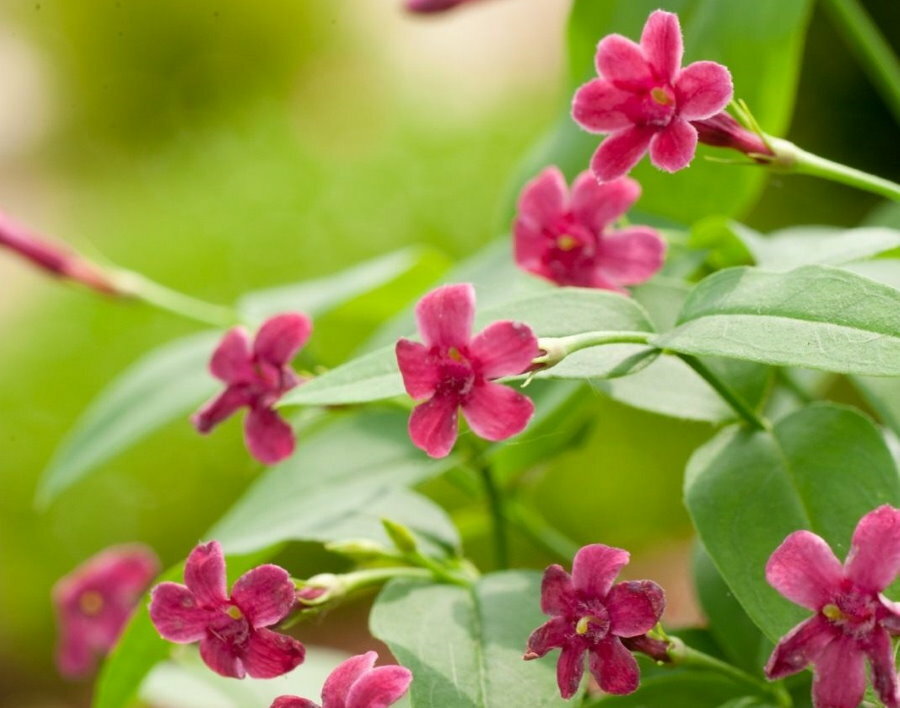
In nature, jasmine Bissa is often found on the banks of rivers
- Holoflower with yellow flowers - early flowering variety, vines reach 3 meters in length. The buds are collected in racemose inflorescences.
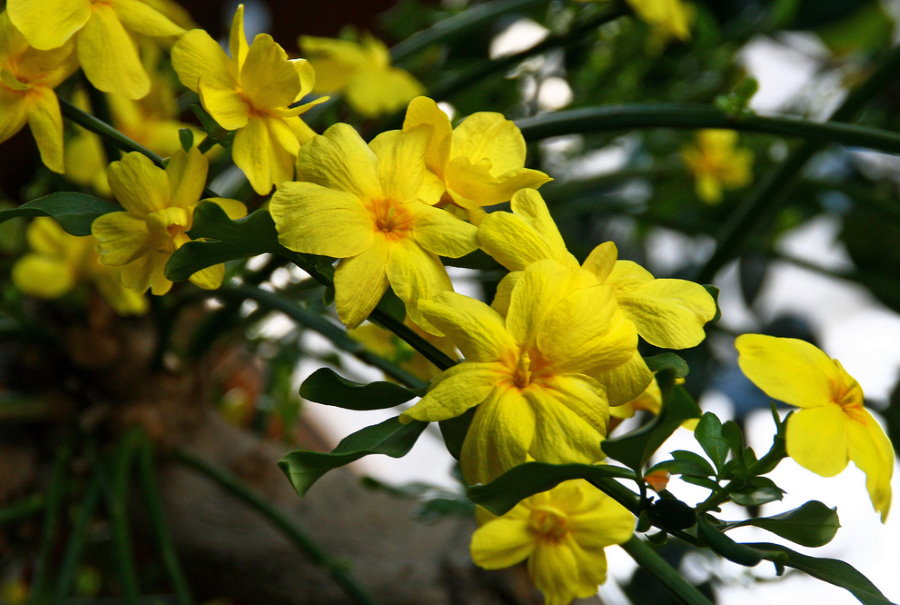
Holo-flowered jasmine is a shrub-like plant with long shoots
- For garden decoration, a jasmine tree or a medicinal shrub with single-row flowers of small size is often used. Shoots grow up to 5 m long, buds form umbellate inflorescences.
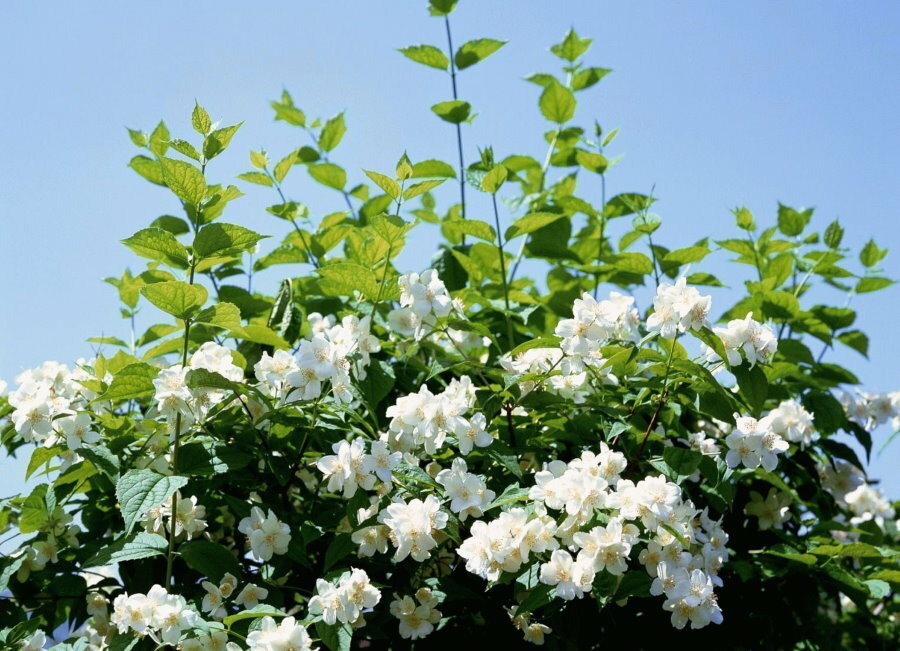
Jasmine officinalis is great for creating a hedge
Comparison with chubushnik and combination options
Chubushnik and jasmine can hardly be found together. There are too many differences between cultures. Evergreen jasmine grows in the southern regions, on loose soils, loves shade and partial shade. Chubushnik - cultivated in temperate latitudes, unpretentious to the composition of the soil, loves the sun.
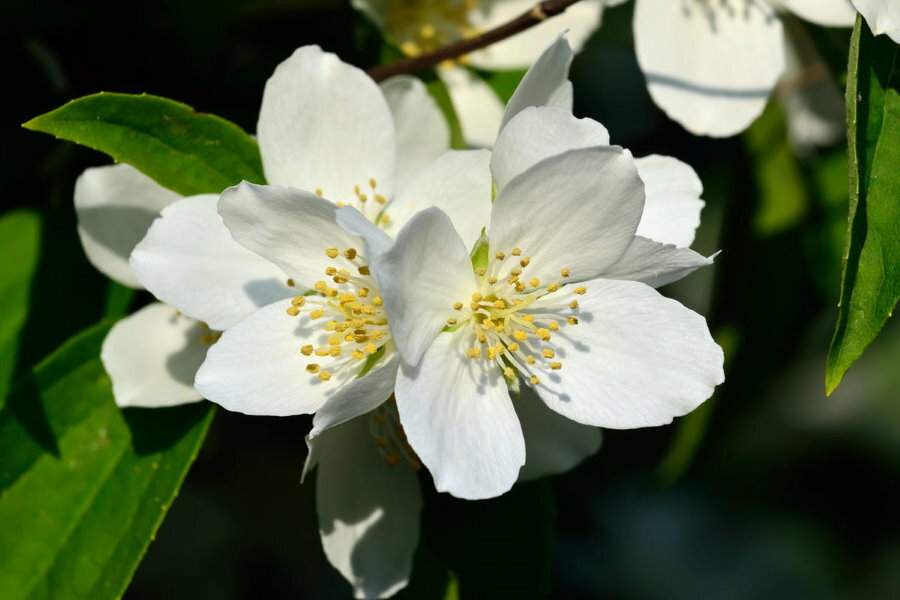
In the photo, the flowers of the mock-orange, often called "garden jasmine"
Depending on the variety, the aroma of chubushnik varies from jasmine to unpleasantly bitter, characteristic of hydrangeas. Another difference is the bark. The southern representative stiffens when it grows old, 5–6 years after planting. The mock-orange immediately forms stems wrapped in brown bark. The wood of the unpretentious chubushnik is solid, inactive.
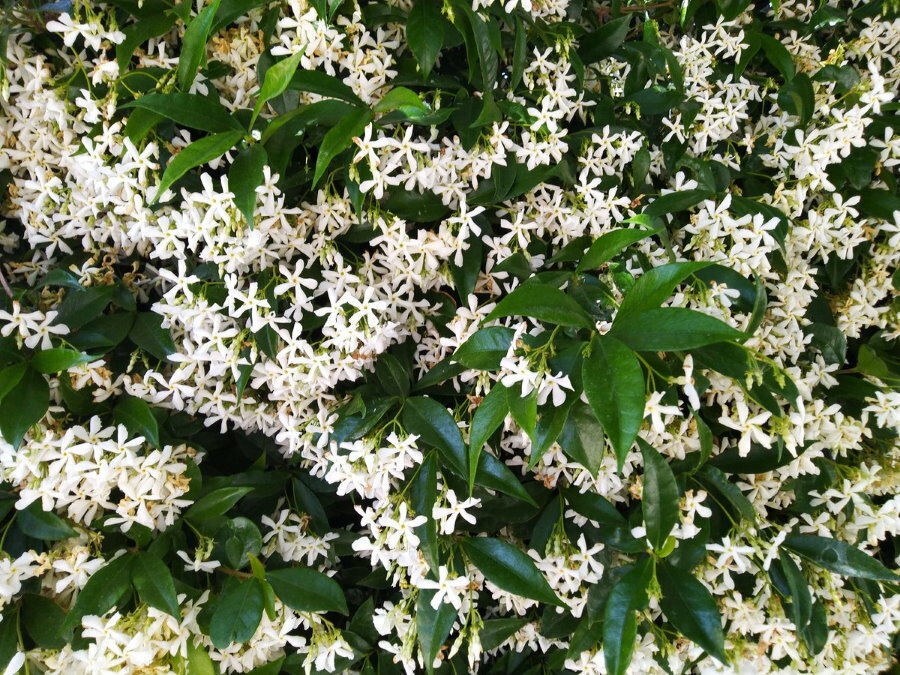
In the photo there are real jasmine flowers with elongated petals
Inflorescences in crops also differ. Jasmine has a straight flower, a chubushnik has a glass-like flower, many varieties have semi-double and double flowers. Jasmine varieties cannot boast of such splendor.
Photos of beautifully decorated gardens with jasmine
For hedges, varieties of chubushnik are used - plants of the hydrangea family. Jasmine flower photo shrub of the olive family is used to decorate outdoor terraces, recreation sites.
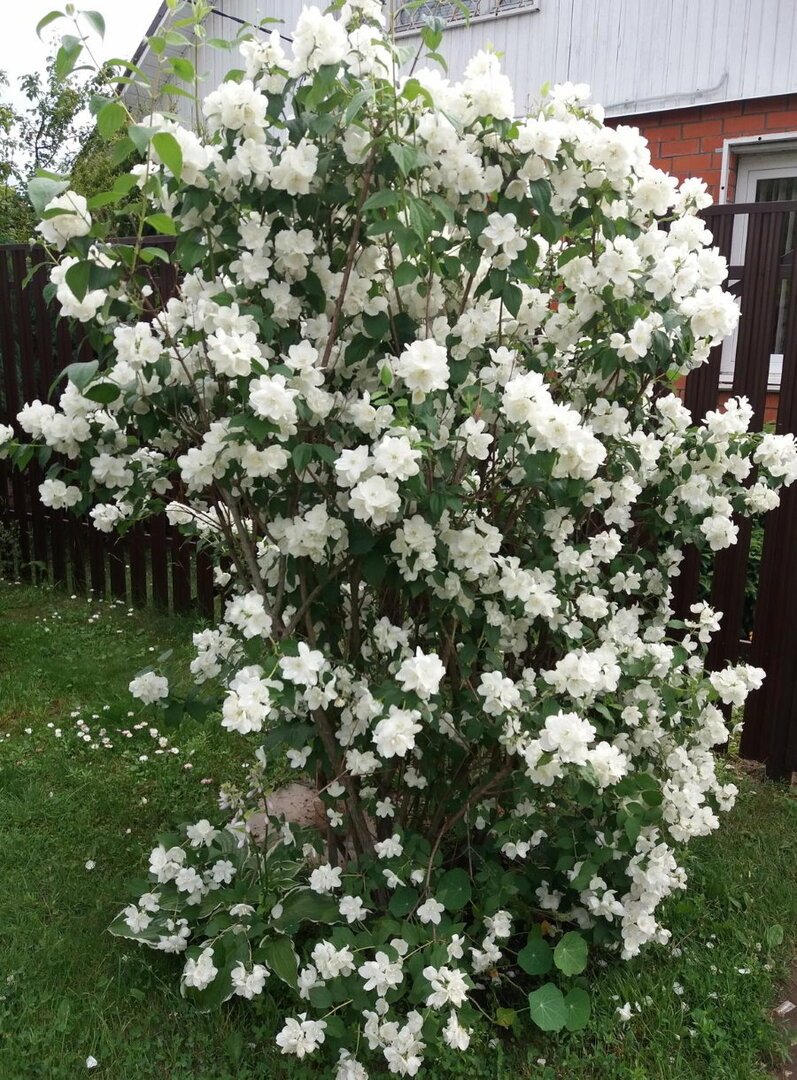
Garden jasmine is a very showy plant
Bushes are planted near artificial reservoirs, they mask unsightly buildings with plantings, creating partial shade for the bushes. Arches, fantasy compositions are formed from varieties of curly garden jasmine during container planting. In winter, crops decorate winter gardens; in summer, containers are placed on the blind area under the windows. A wonderful aroma is able to scare off blood-sucking insects.
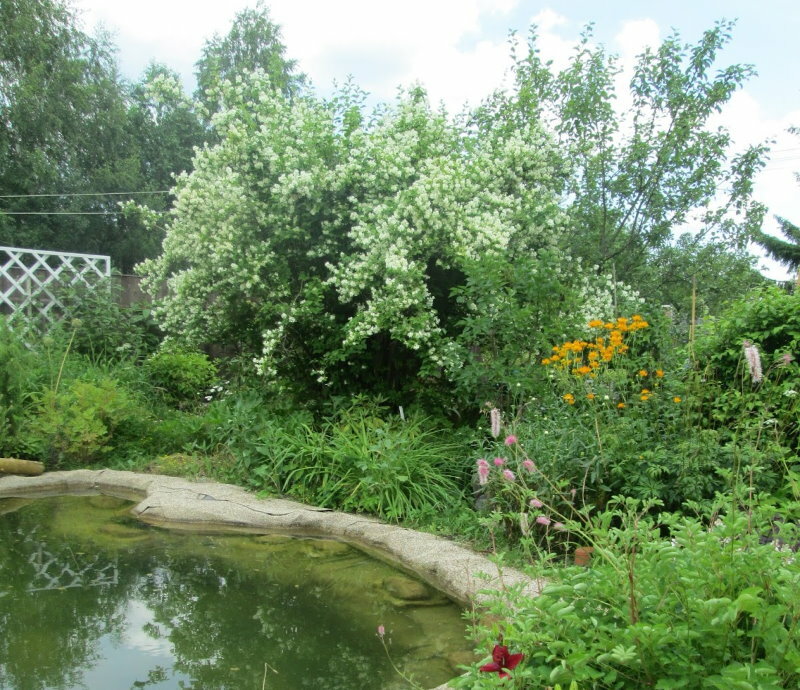
Luxurious jasmine bush on the banks of an artificial reservoir
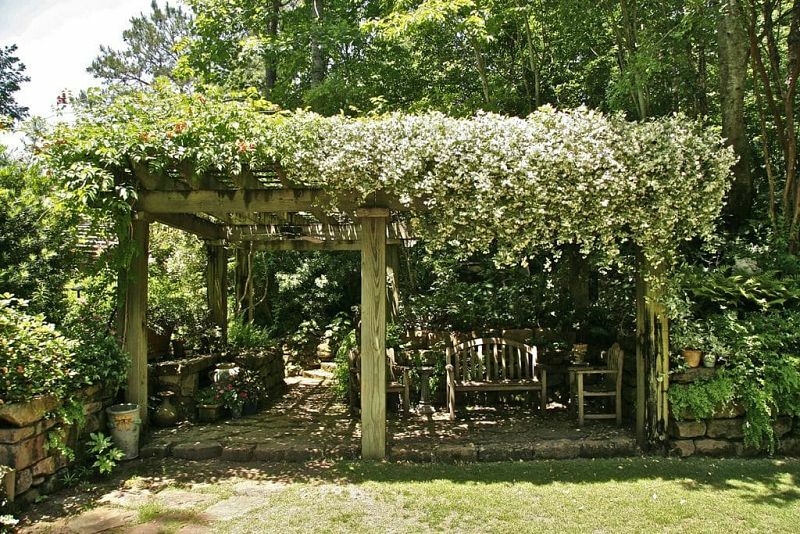
Wooden pergola entwined with twigs of climbing jasmine
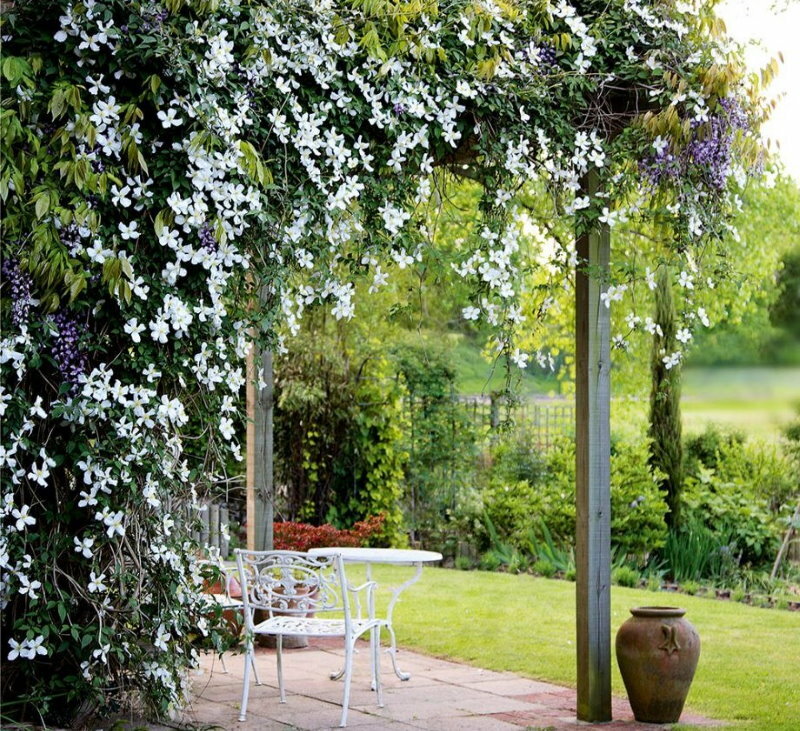
A cozy place to relax in the shade of blooming jasmine
In the southern regions, jasmine is grown on trellises, along hedges made of netting. Combines yellow flowers and red varieties. The dark green herbs of the medicinal variety serve as a good backdrop for grass parterre lawns.
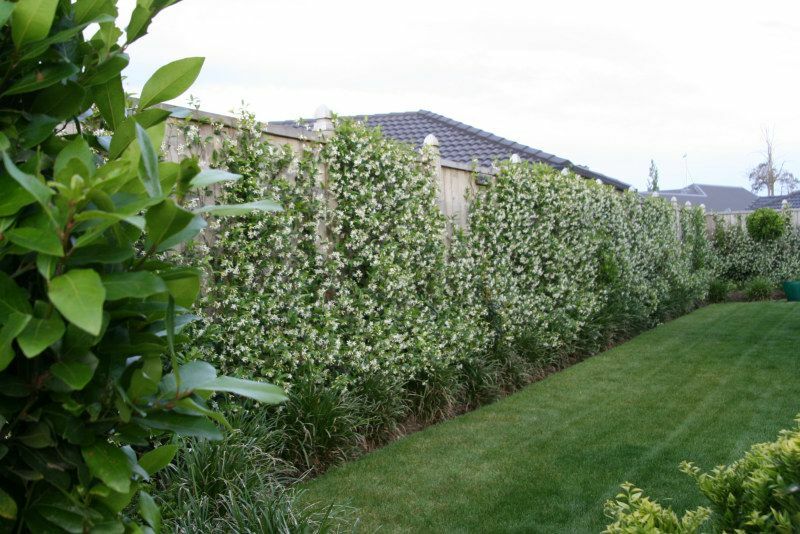
Climbing jasmine hedge with white flowers
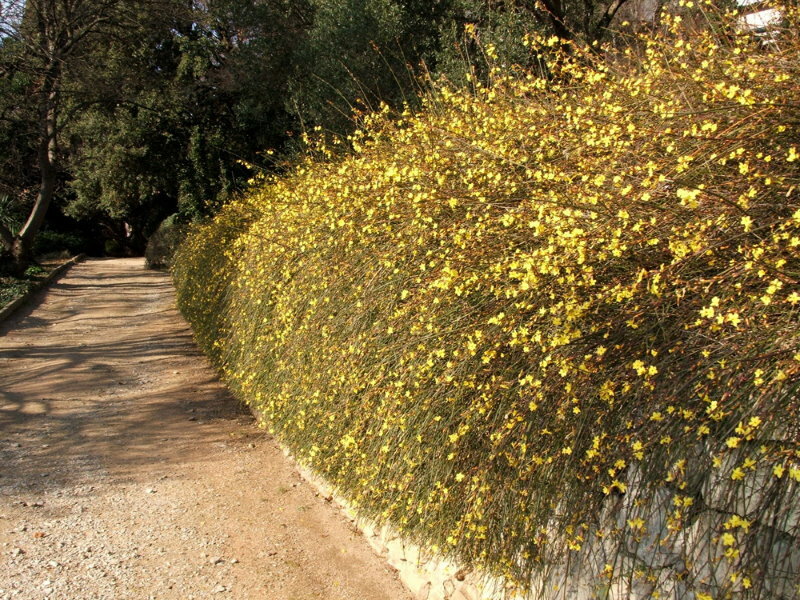
Bush jasmine hedge with yellow flowers
Video: Shrub jasmine - growing and care
Photo of jasmine in the garden




